54+ Sample Cornell Note Templates
-

Cornell Note Template
download now -

Cornell Notes Taking Template
download now -

Cornell Notes Sheet Template
download now -

Cornell Notes Summary Template
download now -

Cornell Notes Template
download now -

Printable Cornell Notes Sheet
download now -

Math Cornell Notes – Taking
download now -

Science Cornell Notes
download now -
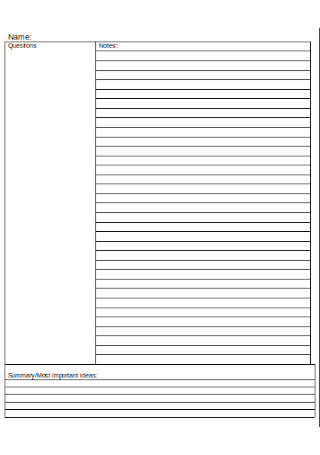
Blank 7th Grade Cornell Notes
download now -

English Cornell Notes Guide
download now -

Aesthetic Cornell Notes –Algebra
download now -

Simple 8th Grade Cornell Notes
download now -

Biology Cornell Notes Theme
download now -

Middle School History Cornell Notes
download now -

Sample Cornell Notes & TPCASTT
download now -

Chemistry Cornell Notes – Energy
download now -

Model Cornell Notes Directions
download now -

OneNote Two Column Note
download now -

Chemical Reactions Cornell Notes
download now -

Vocabulary Notion Cornell Notes
download now -
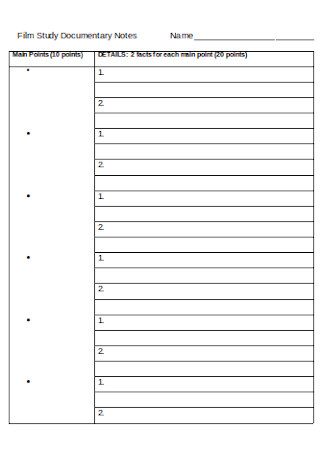
Film Study Anatomy Documentary Notes
download now -

Cornell Notes Paper Reference Sheet
download now -

Cornell Notes Grammar
download now -

100 Years Cornell Notes
download now -

Parts of Speech Notes
download now -

Renaissance Cornell Notes
download now -

Nouns Cornell Notes
download now -

Cornell Notes Sheet Template
download now -

Empty Cornell Notes
download now -

Sample Cornell Notes Template
download now -

Comma Cornell Notes Template
download now -

Mesopotamia Cornell Notes
download now -
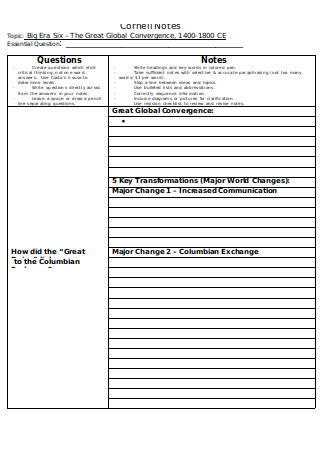
Global Convergence Cornell Notes
download now -

Chapters Cornell Notes
download now -
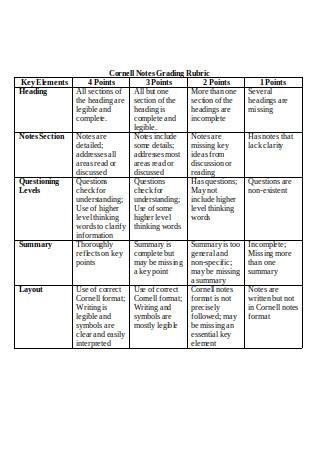
Cornell Notes Grading Rubric
download now -

Background Notes
download now -

High School Cornell Notes
download now -

Cornell Notes Sheet Example
download now -

Fillable Cornell Notes
download now -

Cornell Notes Sheet in PDF
download now -

Best Cornell Notes Template
download now -

Cornell Note-taking System
download now -

Student Handout Cornell Notes Template
download now -

Sample Two Column Notes
download now -

Cornell Note-Taking Method
download now -

Ranger Cornell Notes Template
download now -

Format of Cornell Notes Template
download now -

Cornell Note Summary Template
download now -

Cornell Note Review
download now -
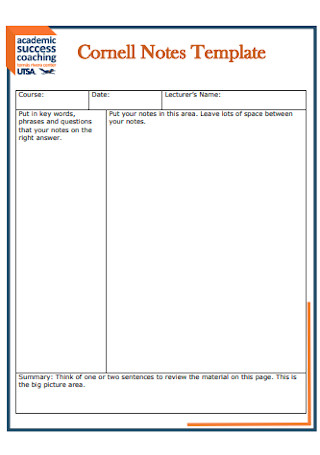
Cornell Template
download now -

Student Handout Cornell Notes
download now -

Cornell Notes Method
download now -

Cornell Notes Format
download now -

Editable Cornell Notes
download now -
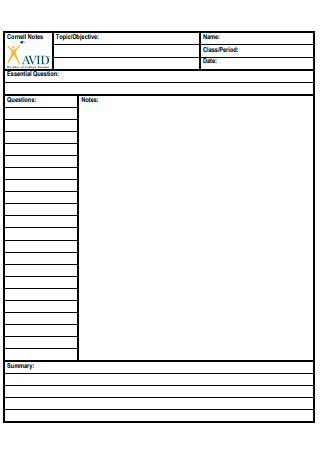
Standard Cornell Notes
download now
FREE Cornell Note s to Download
Cornell Note Format
54+ Sample Cornell Note Templates
What is a Cornell Note?
The Body of a Cornell Note
How to Create Cornell Note?
FAQs
Is the Cornell method effective?
What are the five Rs of the Cornell method?
What is the disadvantage of Cornell notes?
Can Cornell Notes be used for all subjects?
What are the benefits of using Cornell Notes?
Cornell Note Format
Title: [Insert Topic Name]
Date: [Insert Date]
Cue Column (Left-hand side)
Keywords, Questions, and Main Concepts
- Key term 1
- Key term 2
- Key term 3
- Key concept/question
Note-Taking Area (Right-hand side)
Detailed Notes and Explanations
- Detailed explanation of key term 1
- Definition, examples, and context for key term 2
- Explanation of key concept or question from the cue column
- Additional notes, diagrams, and important details
Summary (Bottom section)
A brief summary of the notes in your own words
- Short summary of key ideas or conclusions
- Important takeaways or insights
What is a Cornell Note?
The Body of a Cornell Note

On a typical sheet of paper, a Cornell note appears in three to four sections. It comes in different measurements because the handwriting and preference of people also vary. In any case, this note-taking technique has a determined structure that enables students to practice the studying and learning strategy as intended.
How to Create Cornell Note?

1. Divide the Paper: Draw a horizontal line about 2 inches from the bottom of your paper. Then, draw a vertical line about 2.5 inches from the left side of the paper. This will create a large section on the right, a narrow column on the left, and a small space at the bottom.
2. Note-Taking: In the large right-hand section, take notes during your lecture or reading. Focus on writing down key concepts, definitions, and important details. You can also see more on Concept Note.
3. Review and Highlight: After your notes are written, go back and highlight or underline important points and key ideas. This helps to identify what’s most important in your notes.
4. Summarize: At the bottom section of the page, write a brief summary of the material you’ve just learned. This should be a few sentences that capture the main ideas of the lecture or reading.
5. Use the Left Column: After the lecture, use the left column to write down questions, keywords, or main ideas based on your notes. This section acts as a trigger for review and helps reinforce your memory of the material. You can also see more on Doctor’s Note.
FAQs
Is the Cornell method effective?
Cornell note-taking is an efficient recording and studying method. Because our brain is not a bottomless pit where we can store infinite amounts of information, it filters relevant and important information. This note-taking strategy helps you tell your brain that what you are learning is important. Also, it encourages understanding of learning material through its spatial structure and its practices.
What are the five Rs of the Cornell method?
The Cornell notes method teaches not only how to take good notes but how to use them as well. You have to record lecture notes in your notebook. After that, you synthesize and reduce all the information into keywords and questions. When you study, recite and explain the lesson to yourself. To better understand and remember the lesson, reflect on how you can apply the content in real life. Of course, you also have to study your notes. Review what you have written. Provide a summary that captures the gist of the lecture. You can also see more on Notebook Paper.
What is the disadvantage of Cornell notes?
Although the strategy is beneficial, it does not apply to all people. Some people are not comfortable taking after a format of note-taking. They learn best when they can have their way of doing things. They find that the determinate way of note-taking restricts their ideas and learning. Learning is not a linear pathway, and people are free to develop their roadmap to understanding.
Can Cornell Notes be used for all subjects?
Yes, Cornell Notes can be used for any subject, whether it’s a lecture-based subject like history or science, or something more conceptual, like mathematics or literature. The format is adaptable to fit various types of material, making it a versatile tool for study and organization.
What are the benefits of using Cornell Notes?
Cornell Notes help in organizing information clearly, making review easier. The system encourages active learning by prompting students to ask questions and summarize material. It also promotes better retention and understanding, as the review process involves both recall and reflection on the content. You can also see more on Notarized Letters.
